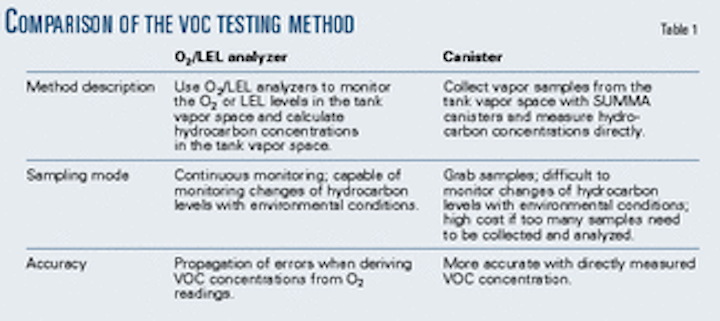Floating roof tank based on numerical simulation and wind tunnel experiment gao zhang 1.
Floating roof tank vapor space.
7 1 1 5 variable vapor space tanks b variable vapor space tanks are equipped with expandable vapor reservoirs to accommodate vapor.
Floating roof storage tanks have their roofs actually resting on the stored liquid and rise and fall as the inventory level changes.
The roof rises and falls with the liquid level in the tank.
As with the internal floating roof tanks the function of the fixed roof is not to act as a vapor barrier but to block the wind.
G internal floating roof tanks with closed vent systems.
This floating roof rises and falls with the liquid level inside the tank thereby decreasing the vapor space above the liquid level.
Floating roof storage tanks have their roofs actually resting on the stored liquid and rise and fall as the inventory level changes.
Section 7 1 3 8 2 addresses estimation of emissions when an internal floating roof tank has closed pressure vacuum vents.
For floating roof tanks you should calculate the emissions for one turnover then add the emissions from the tank assuming the tank has a fixed roof with a height equal to the floating roof s guide legs in order to approximate the vapor displaced from the space under the floating roof.
The type of fixed roof most commonly used is a self supporting aluminum dome roof which is of.
Oil evaporation from the stored liquid into the tank gas space and vapor emissions from the tank gas.
Floating roofs are considered a safety requirement as well as a pollution prevention measure for many industries including petroleum refining.
In the event that the floating deck is replaced with the lighter ifrt type deck the tank would then be considered an internal floating roof tank.
The equations for routine emissions from internal floating roof tanks assume that the tank has open vents in the fixed roof.
Identical to those on external floating roof tanks.
Floating roof storage tanks are inherently safer than fixed roof tanks as they essentially eliminate the creation of a vapor space in the tank above the combustible liquid.
As opposed to a fixed roof tank there is no vapor space in the floating roof tank except for very low liquid level situations.
Domed external floating roof tanks usually result from retrofitting an external floating roof tank with a fixed roof.
Floating roof storage tanks are inherently safer than fixed roof tanks as they essentially eliminate the creation of a vapor space in the tank above the combustible liquid.
In principle this eliminates tank breathing loss and greatly reduces the evaporative loss of the stored liquid.

